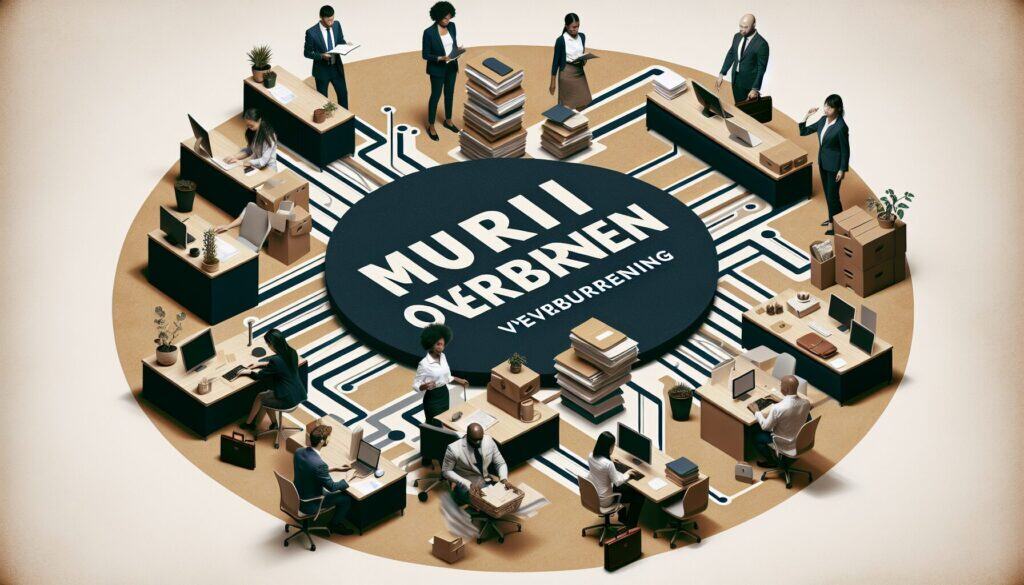防止员工、设备和系统负担过重,超出其设计能力。
- 方法: 客户与营销, 构思, 产品设计
Muri (覆盖层)

Muri (覆盖层)
- 持续改进, 人体工程学, 人为因素, 精益制造, 流程改进, 生产率, 质量管理, 安全, 训练
目标
如何使用
- 精益概念的重点是确保工作要求合理,不会过度消耗资源。这包括合理的工作设计、培训、人体工程学考虑和标准化工作。
优点
- 改善员工福利和安全;减少因过度劳累造成的故障和缺陷;提高长期生产率和可持续性;提高质量。
缺点
- 确定 "负担过重 "可能是主观的;如果不同时改进流程以有效处理负载,减少 Muri 有时可能会减少短期产出;需要仔细平衡工作量和设计流程。
类别
- 人体工程学, 人力资源, 精益西格玛, 制造业, 质量
最适合:
- 通过设计工作系统,避免对人员和机械造成过大压力,确保可持续的安全运营。
穆里, or the concept of overburden, finds its application across various industries such as manufacturing, healthcare, and construction, where excessive workload can lead to operational inefficiencies. The methodology is particularly beneficial in the project phases involving work design and system implementation, facilitating a comprehensive evaluation of existing job structures and identifying areas prone to overburden. It is frequently initiated by team leaders and project managers but ideally involves cross-functional collaboration among engineers, safety officers, and 人力资源 specialists to ensure a holistic approach. Ergonomic assessments play a pivotal role in this methodology, allowing for the redesign of workstations and processes to accommodate human capabilities and limitations, which is crucial in minimizing the physical strain on workers. Training programs focused on efficient work practices, safety protocols, and stress management can be developed as part of Muri implementation, further enhancing employee morale. In sectors such as healthcare, where worker fatigue can critically affect patient care, the adoption of Muri often leads to improved job satisfaction and reduced turnover rates. By mitigating strain on both personnel and machinery, organizations can expect a decrease in equipment malfunctions and product defects, thereby bolstering quality control efforts. This enhances sustainability as businesses operate more efficiently and reduce waste, contributing positively to their long-term goals. Ultimately, engaging in Muri not only promotes a safer work environment but also aligns with lean manufacturing principles that prioritize value creation while minimizing unnecessary resource consumption.
该方法的关键步骤
- Identify tasks that lead to overburdening and analyze their impact on resources.
- Redesign workflows to eliminate unnecessary steps and reduce workload.
- Implement ergonomic assessments to minimize physical strain on workers.
- Standardize work processes to ensure consistency and minimize variations.
- Provide targeted training to enhance skills and efficiency in task execution.
- Monitor the work environment regularly for signs of overburdening and make adjustments as needed.
- Encourage feedback from employees regarding workload and operational challenges.
专业提示
- Implement real-time monitoring systems to gauge workload and stress levels, adjusting tasks dynamically to prevent overburden.
- Develop cross-training programs that enhance skill 多功能性, enabling employees to shift tasks without excess strain or downtime.
- Incorporate feedback loops from workers to identify inefficiencies and improve task design, fostering a culture of continuous improvement.
历史背景
1950
1958
1960
1960
1960
1960
1963
1950
1950
1960
1960
1960
1960
1962
1970
(如果日期不详或不相关,例如 "流体力学",则对其显著出现的时间作了四舍五入的估计)。















相关文章
制造运营管理(MOM)
制造执行系统(MES)
生产控制计划
人工测试
手动搬运评估表 (MAC)
手动任务风险评估工具(ManTRA)